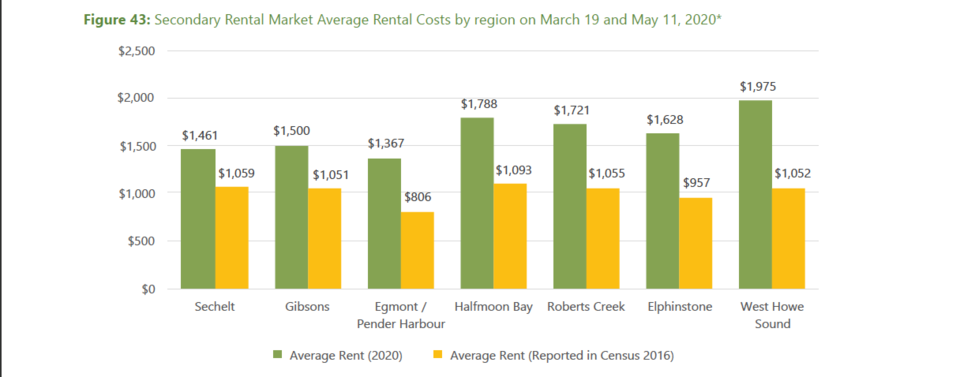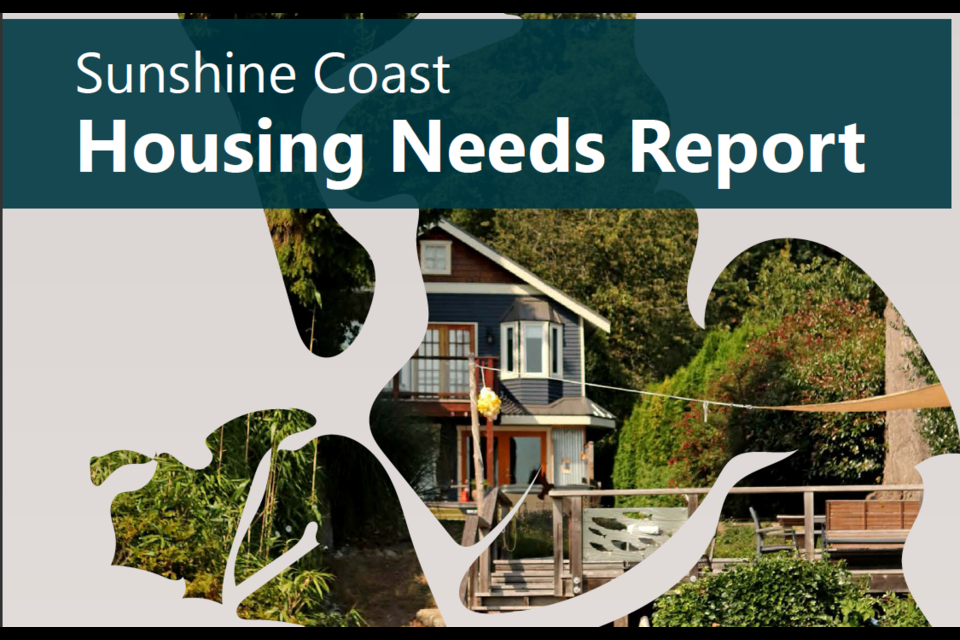A recently completed Housing Needs Assessment (HNA) for the Sunshine Coast seems to confirm what many on the Coast already believe – housing is getting harder to find and harder to afford.
The HNA, which every local government in the province was required to conduct by April 2022, was prepared by consultants from the firm Urban Matters working with Gibsons, Sechelt, the Sunshine Coast Regional District (SCRD) and a regional steering committee.
There was also a survey that generated 604 responses.
The $110,000 cost of the HNA was covered by a provincial grant.
The report’s executive summary begins by stating that “over the last 15 years and particularly since 2014,” the Sunshine Coast has seen housing costs rise in part through the impact of “the escalation of housing and land costs in Metro Vancouver.”
“Across the Coast, many median-earning households are priced out of home ownership and many renter households struggle to find affordable and available long-term rentals,” the report says. “[And] homelessness appears to be on the increase.”
It also suggests one of the impacts of rising housing costs in Metro Vancouver is more people looking to move to the Coast.
“Anecdotal evidence suggests the Coast is experiencing increasing migration of young families from Metro Vancouver and other areas of the province due to the relative affordability of the Coast compared to Metro Vancouver.”
The assessment shows key areas of need in affordable housing, rental housing, special needs housing, housing for seniors and supports for people experiencing homelessness and housing insecurity.”
Much of the hard data in the assessment dates back to 2016, the year of the last full national census, while other information is based on projections using past trends.
The most significant conclusion is that, as of 2016, there were approximately 1,175 renter and 860 owner households in “core housing need,” meaning they’re living in unacceptable conditions such as overcrowded housing or housing in need of repairs and “cannot afford an acceptable alternative housing unit in their community based on median rents.”
The report says since 2016 the cost of rent has gone up about 40 per cent in the SCRD rural areas and nearly doubled in Gibsons and Sechelt and the number of households living in core housing need has increased.

In terms of the overall housing stock on the Coast the report notes that, “based on past trends, projections suggest approximately 523 new households may have formed between 2016 and 2020, while there were 1,135 building permits issued over this timeframe.”
It also says single-detached homes remain the most common type of housing while at the same time being “unaffordable for median earning households in almost all communities.”
Gibsons was found to have the most diverse housing stock of the communities on the Coast and the highest proportion of renter households, at about 28 per cent, but 48 per cent of those renter households are considered in core housing need.
The Housing Needs Assessment attempts to put a dollar figure on the “affordability gap” and says estimated household income growth hasn’t kept pace with the rising price of renting or home ownership.
For example, a family with a median household income in Roberts Creek is still about $1,500 a month short of being able to afford to own a typical single-family home in the community.
A couple with children making a median income in West Howe Sound falls about $308 shy of the monthly cost of a suitable rental.
A single parent living in Sechelt and making the median income would have to find an extra $912 per month to rent a suitable single-detached home or townhouse and around $600 to afford a secondary suite or apartment.
In Pender Harbour the affordability gap for a couple with no children living with them and a median income is $1,455 for a suitable rental.
Councillors in Gibsons will be the first to formally receive the report, which is part of the agenda for the Oct. 6 planning and development committee meeting. A copy has been posted with the agenda on the Town’s website.
While the HNA sets out the scope of the problem, it does not offer specific strategies for dealing with it.
The SCRD, Gibsons, and Sechelt are now awaiting a companion report from Urban Matters that is expected to outline “options and best practices” for encouraging the “development of needed housing types.”
According to the Town of Gibsons, that report is expected this winter.



